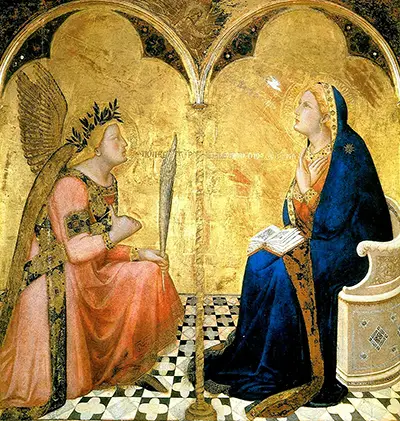Ambrogio Lorenzetti - Master of the Sienese School
Ambrogio Lorenzetti starred in the Sienese School of 14th century Italy, impressing as a painter through artworks such as The Allegory of Good and Bad Government. Lorenzetti was notable for the innovative and original nature of his work, managing to strike a balance between satisfying patrons whilst also forging his own artistic path.
Early Life and Education
Ambrogio Lorenzetti was born in the late 13th century, possibly 1290, to a family of established artisans and artists. As Siena residents, the family could benefit from the city's rich artistic heritage, with commissions freely available to the most respected artists. Both Ambrogio and his brother showed early promise, and efforts were made by the family to allow their talent to flourish.
Overview of the Sienese School
The Sienese School offered a prolific output of art from the 13th to 15th century, and Lorenzetti was joined in the group by a number of other highly notable names who would each leave their own artistic mark on the direction of Italian art. These included the likes of Duccio, Simone Martini as well as Ambrogio's own brother, Pietro.
The content of Ambrogio Lorenzetti's oeuvre is entirely typical of the Sienese School, with no privately commissioned portraits, and much more of a concentration on traditional religious themes. They would often use rich colors and relatively slim figures in their scenes, many of which would be highly complex.
Allegory of Good and Bad Government
The Allegory of Good and Bad Government was completed by Ambrogio Lorenzetti in 1338-1339. The project consisted of three fresco panels, each containing multiple scenes, which can today be found in Siena's Palazzo Pubblico. The project was a rare entry into civic art, with most Sienese art devoted to religious themes. The artworks are believed to have been intended to remind local magistrates of the importance of their own roles, and the need to follow the right moral path in their decision making.
The scenes make use of bright colors with tall, slim figures which is typical of art from this region. The different scenes give a reminder as to the potential results of poor government, and the benefits of leading correctly. This type of comparison has been seen in art frequently, though was rare in Italy at that time, other than perhaps in religious scenes. Siena experienced turbulent politics at this time, and the artist was aware of the need for calm and good governance.
In his frescoes in the Sala della Pace Ambrogio once more has outdone classical artists, for he has made a conglomerate out of numerous isolated episoes. None the less, the original impetus to p a in t such genre scenes ... may very well also have been inspired by a reading of Pliny.
Mary D. Edwards, Ambrogio Lorenzetti and Classical Painting
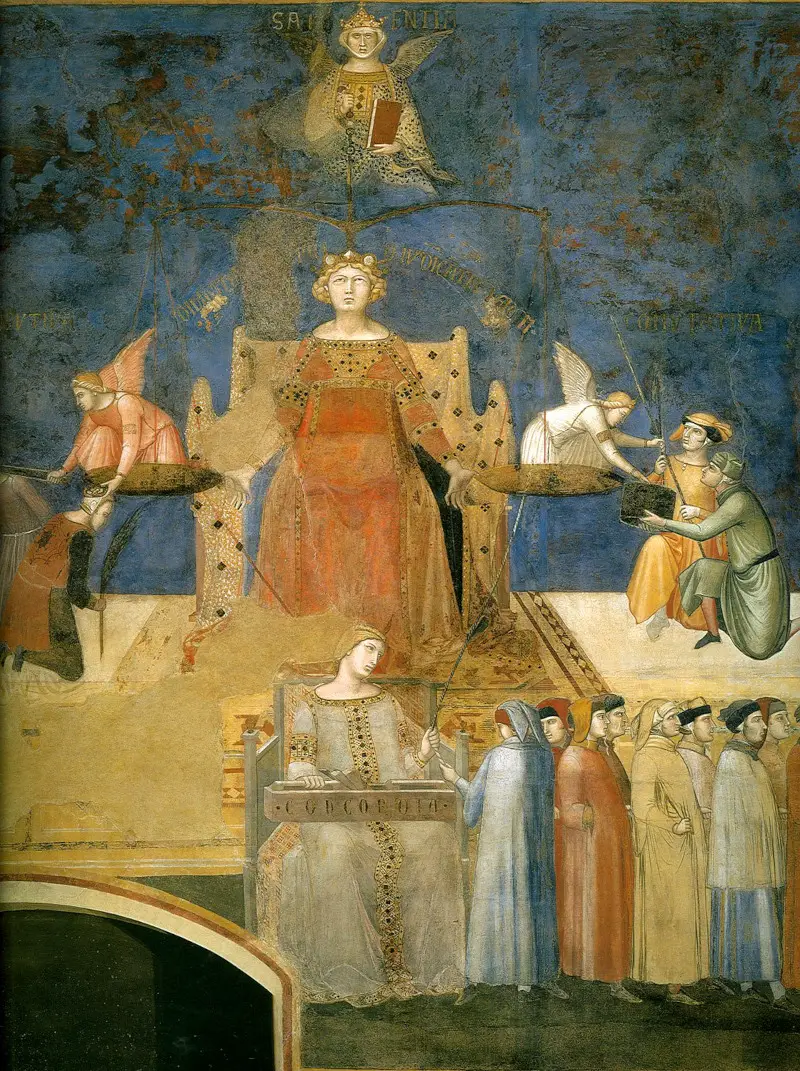 The Allegory of Good and Bad Government
The Allegory of Good and Bad Government
Ambrogio Lorenzetti Artwork Gallery
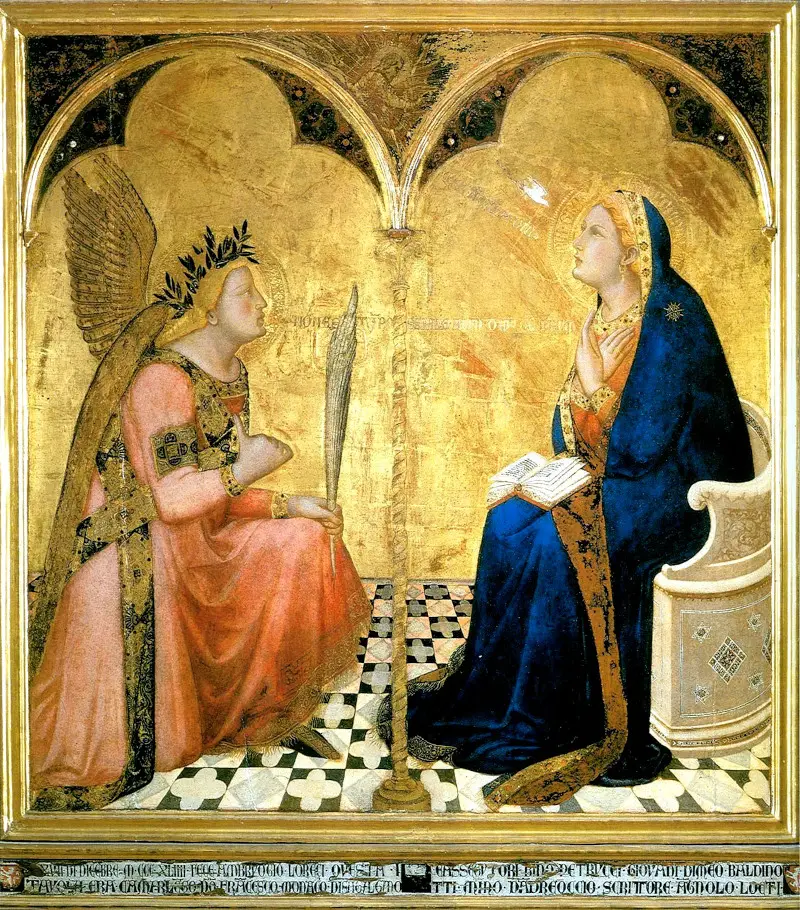
Annunciation
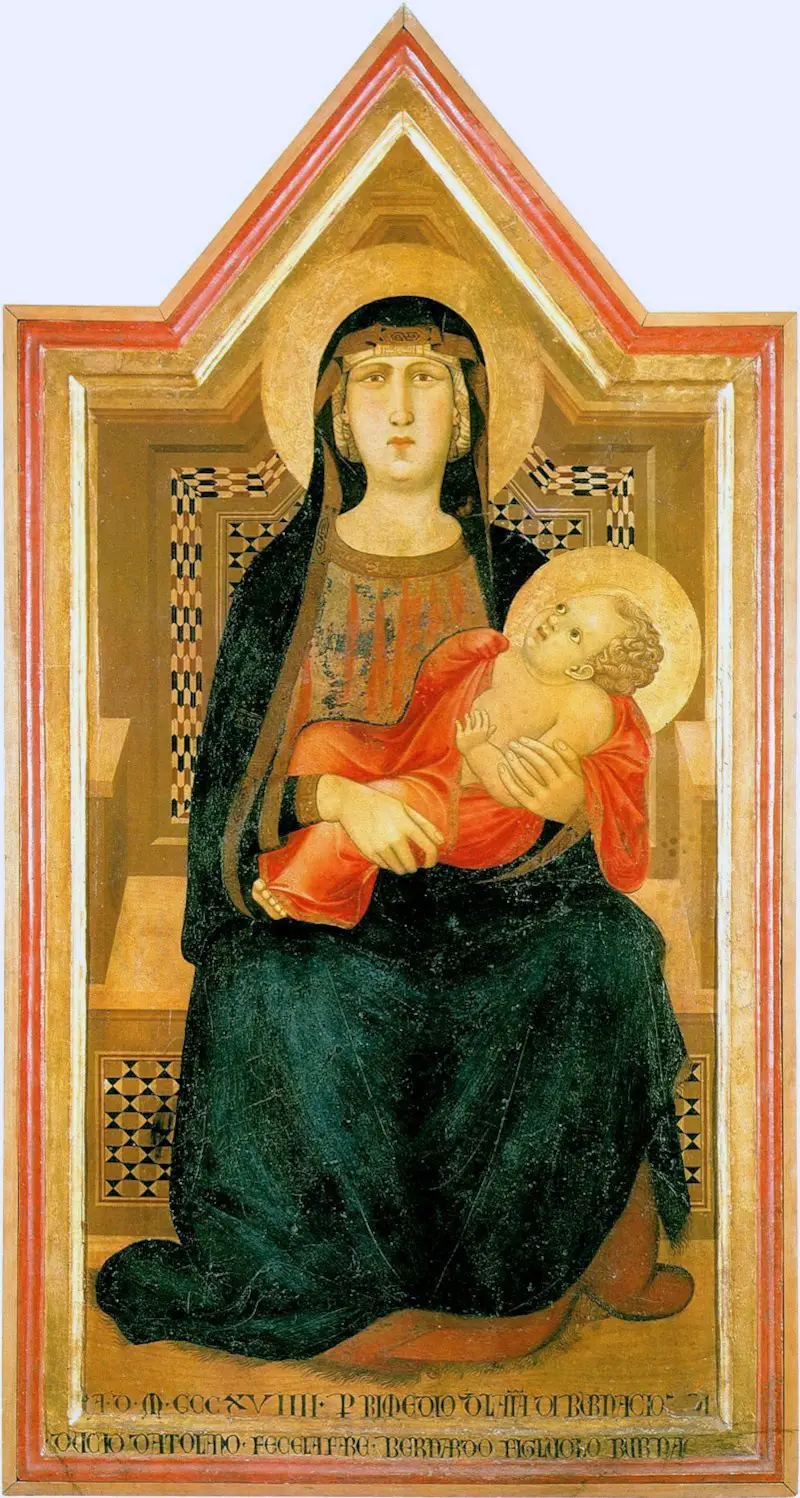
Madonna and Child
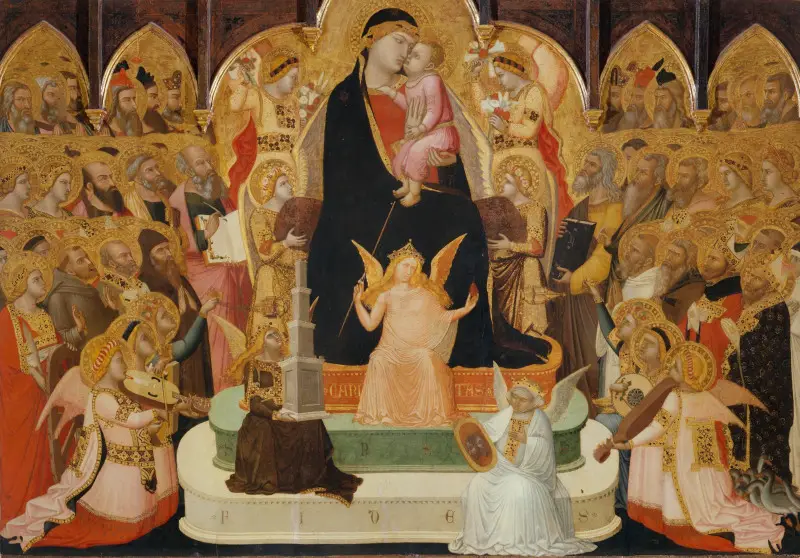
Maesta
Artistic influences
The style of Giotto is entirely evident in the work of both Lorenzetti brothers, and they are known to have travelled around Italy several times, during which they would have been introduced to his work. This approach brought new ideas into the Sienese School, though many other aspects of their work were in line with other local artists.
The artist also studied Pliny who described classical art and this gave Ambrogio ideas on how to take the best of artists like Giotto but then evolve things further. This could be seen in how he depicted women in his work, and also the use of strong emotions in some of the faces of his figurative work. Ambrogio spent time in the company of authors and theorists, expanding his influences beyond just the visual arts.
Much of the experimentation carried out by Ambrogio Lorenzetti, such as in the use of perspective, would carry over into the Renaissance itself, and the two brothers helped to broaden the scope of the Sienese style. They would also set up a new studio in Siena after other artists had left, helping to continue the artistic legacy of this region.
Artistic Technique and Innovations
Ambrogio Lorenzetti made use of bright and bold colors, influenced by Giotto, and also experimented in many different aspects of painting technique. His figurative work was considered natural and human-like in its qualities, drawing followers to his commissioned pieces. He avoided standard portraits, and focused mainly on religious themes, regularly covering large walls with his innovative frescos.
The artist could also plan out his ideas, creating narratives which ran smoothly from one scene to the next. This enabled him to take on large commissions, where multiple series of paintings had to be designed and implemented. His brother had his own ideas, and the two were able to complement each other on a number of collaborative pieces.
Other Major works by Ambrogio Lorenzetti
Madonna and Child
Madonna and Child by Ambrogio Lorenzetti illustrates a clear influence on the artist from Byzantine art, such as in the angle of the sitter. The artist was relatively young at the time that he produced this painting, and you will see an evolution away from this in later artworks. The patterns and color schemes helps to draw the madonna forwards towards us, and it remains one of his finest early contributions.
Investiture of Saint Louis of Toulouse
Investiture of Saint Louis of Toulouse was a collaborative piece completed alongside his brother, Pietro, in 1329. This item is most notable for its advancements in perspective, which lay the foundation for later artists to truly master this artistic discipline. He was regarded as a natural artist, able to create lifelike images in a manner that later artists would learn much from.
Maestà
Maestà provides another connection to the artist's interest in literature, which in this case brings a connection to the work of Dante. The artist also provides human qualities to the Madonna within this scene, helping viewers to connect with the content. Elements of the work of Simone Martini are also evident within this piece, though Ambrogio forges his own path with a number of stylistic additions.
Conclusion
Ambrogio Lorenzetti played a crucial role in continuing the success of the Sienese School, whilst also bringing in new ideas from other Italian regions. His studio that he ran with his brother helped the school to retain its prominence for centuries to come, and he also incorporated classical ideas into his work, drawing inspiration from literature.
The Allegory of Good and Bad Government remains his most famous contribution and followers of the artist can still seek it out today. His strongest legacy was in experimenting with technique in a manner which would continue into the early phases of the Italians Renaissance, where later generations of artists would evolve some of his ideas.



